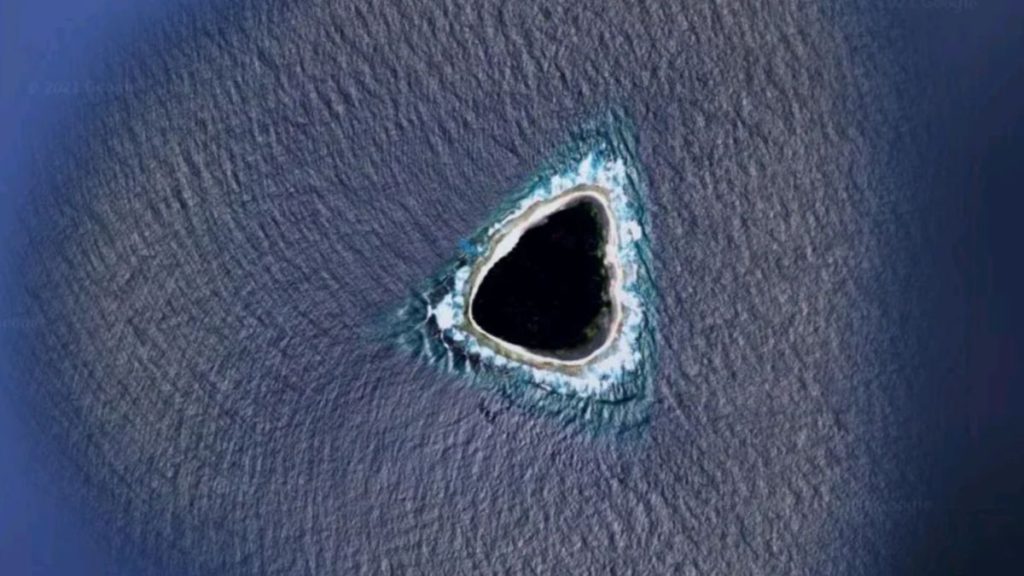Earth from space: A mysterious ‘black hole’ in Pacific Ocean that sparked wild rumors online – Livescience.com

This Google Maps image captured in 2021 revealed a mysterious, triangular dark patch in the middle of the Pacific Ocean, sparking bizarre rumors about its origin. However, it turned out to be a small island with incredibly dense tree coverage.
When you purchase through links on our site, we may earn an affiliate commission. Here’s how it works.
Where is it? Vostok Island, Kiribati [-10.06285840, -152.311076]What’s in the photo? A coral island covered in trees that make it look like a “black hole”Where did the photo originate? Google MapsWhen was it taken? October 2021This striking satellite image, taken from Google Maps in 2021, shows a bizarre, jet-black, triangular structure in the middle of the Pacific Ocean.At the time, the mysterious object, which was widely referred to as a “black hole,” sparked wild rumors online. However, it was quickly revealed to be an uninhabited island covered with dense trees.The screenshot was initially shared on Reddit and, despite being labeled as an island in the caption, accumulated a variety of speculative comments that were published by tabloid media sites at the time. These unusual ideas included a deep pit under the planet and a top-secret military base that had been blurred out.However, it was quickly confirmed that the dark patch was actually Vostok Island, one of the 33 landmasses that make up the Republic of Kiribati in the South Pacific, the BBC reported at the time. The island, which is a coral atoll, has an area of just 0.1 square mile (0.25 square kilometer) and is located around 4,000 miles (6,000 km) east of Australia.The virtually black color in the Google Maps image is the result of the island’s densely populated Pisonia trees, which almost completely fill the island’s interior. These trees are dark green, but in such a high concentration, they look much darker from low Earth orbit, according to the BBC.Related: See all the best images of Earth from space Pisonia trees are known to grow so closely to one another that they often prevent any other tree or plant species from taking root in between them because they block out so much light, according to the academic news site JSTOR Daily.Get the world’s most fascinating discoveries delivered straight to your inbox.The dense foliage also lures a variety of seabirds, including boobies, noddies and frigatebirds, according to a 1971 survey. These birds get covered in sticky seed pods and thus help disperse them to other islands.—Antarctica’s ‘Deception Island’ is one of the only places on Earth where you can sail into an active volcano—Gravity waves spark pair of perfect cloud ripples above uninhabited islands—Svalbard’s radioactive ‘Bear Island’ surrounded by rare cloud swirls and a giant algal bloomIn other parts of the world, some birds have been known to get so stuck with the Pisonia pods that they become entrapped and die, JSTOR Daily reported. As a result, there are sometimes piles of bones beneath the trees.Before being discovered by Russian explorers in 1820, Vostok Island had shown no sign of ever being inhabited by humans, according to a 1966 article in Pacific Islands Monthly, and it has not had any permanent residents since. This is likely because there is no reliable source of fresh water on the island.Harry is a U.K.-based senior staff writer at Live Science. He studied marine biology at the University of Exeter before training to become a journalist. He covers a wide range of topics including space exploration, planetary science, space weather, climate change, animal behavior and paleontology. His recent work on the solar maximum won “best space submission” at the 2024 Aerospace Media Awards and was shortlisted in the “top scoop” category at the NCTJ Awards for Excellence in 2023. He also writes Live Science’s weekly Earth from space series. Please logout and then login again, you will then be prompted to enter your display name.Canal turns into ‘stream of blood’ in Argentina as locals fear toxic leakAre Atlantic Ocean currents weakening? A new study finds no, but other experts aren’t so sure.’Stay off the roads’: Winter storm warning as deadly floods strike Kentucky
Live Science is part of Future US Inc, an international media group and leading digital publisher. Visit our corporate site.
©
Future US, Inc. Full 7th Floor, 130 West 42nd Street,
New York,
NY 10036.



